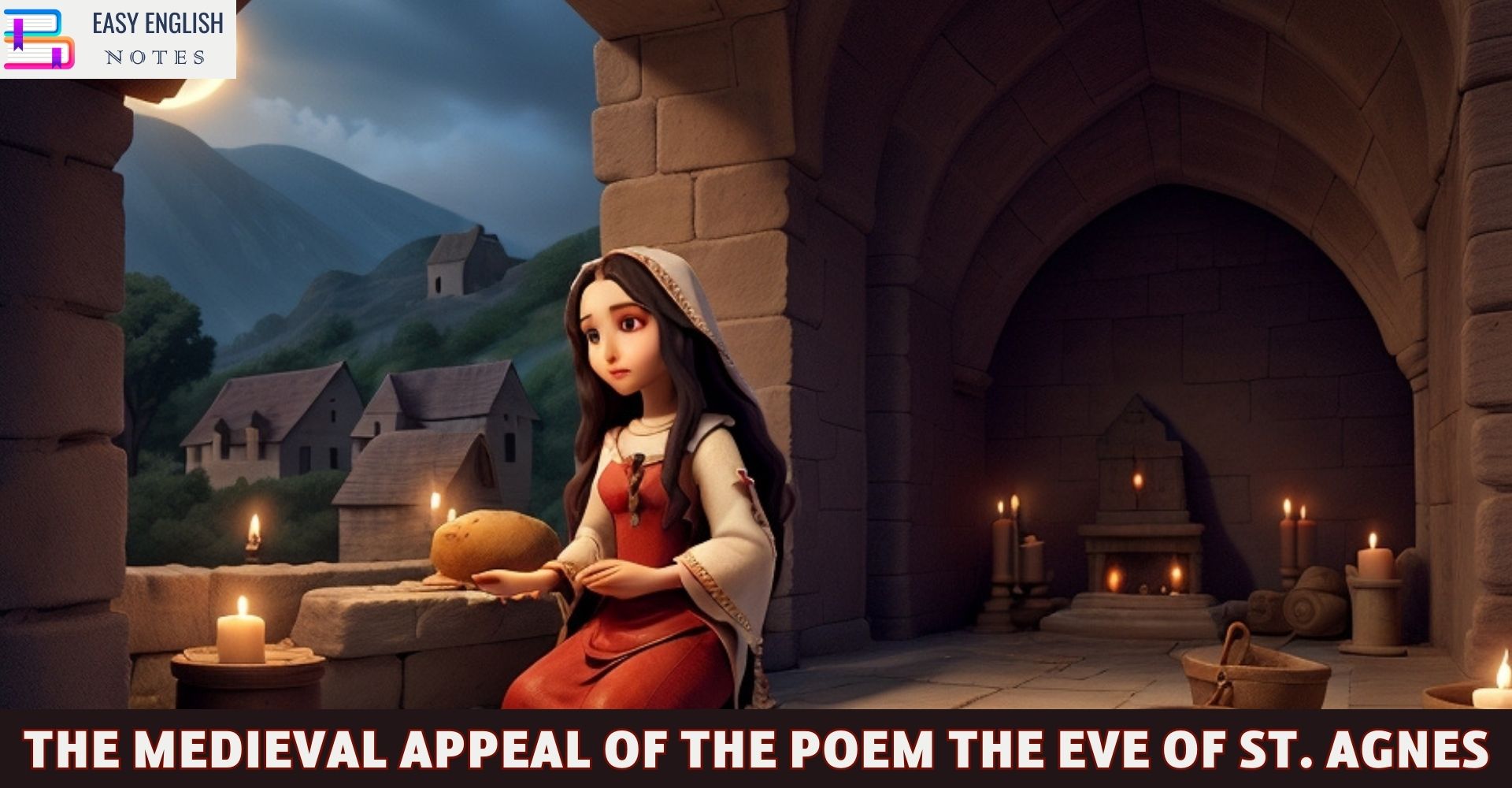The Middle Ages supplies proper and immense material to English poets. They drew freely upon this store house of inspiration. Keats was greatly pleased with medievalism. He found proper food in medieval life and legends.His poem. The Eve of St. Agnes, is a fine example of his taste in medievalism.
Pomp and Pageantry:
The Middle Ages were famous for their artistic tastes. The barons led a gorgeous splendid life. They were given to feasting, dancing and all other merry making. Madeline’s father in the poem also celebrated the Eve of St. Agnes with great pomp and show. The houses of these barons were grand :
A casement high and triple-arch’d there was,
All garlanded with carven imag’ries,
Of fruits, and flowers and bunches of knot grass.
And diamonded with panes of quaint device.
Innumerable of stains and splendid dyes.
As are the tiger-moth’s deep damask’d wings.
Personal Rivalries and Hostilities:
In the Middle Ages, there were frequent wars between the feudal lords. They were daggers drawn with each other. They had personal rivalries and they were therefore hostile to each other. In the poem The Eve of St. Agnes’ we have a glimpse of this hostility. The father of Madeline was hostile to the family of Porphyro; thus Madeline could not love Porphyro and vice versa. When Porphyro reaches the castle of Madeline he is to go quite stealthily. The slightest noise might end his life:
For him those chambers held barbarian hordes.
Hyena foemen and hot blooded lords,
Whose very dogs would execrations howl?
Against his line age….
Theme based on the Medieval Legend:
The theme of the poem is based on the medieval legend of St. Agnes. The legend was that of a maid who observed certain ceremonies and went to bed supperless on the Eve of St. Agnes. She was sure to get a vision of her lover that night. This blind faith has been portrayed in the following lines:
They told her how upon St. Agnes Eve,
Young virgins might have visions of delight.
And soft adoring from their loves receive,
Upon the honey’d middle of the night,
If ceremonies due they did a right:
The ceremonies have been described below:
As supperless to bed they must return,
And couch supine their beauties, lily white,
Nor look behind, nor sideways, but require,
Of Heaven with upward eyes for all that they desire.
Chivalry and Adventure:
Also Read :
- Compare Hamlet with Macbeth, Othello and other Tragedies
- “The Pardoner’s Tale” is the finest tale of Chaucer
- Prologue to Canterbury Tales – (Short Ques & Ans)
- Confessional Poetry – Definition & meaning
Another aspect of medieval life was its chivalric spirit. There were adventurous persons who risked their lives to achieve their desired ends. They were really brave person. We admire the adventurous spirit of Porphyro. He is going to meet Madeline in a castle which is well guarded. This type of adventure cannot be undertaken by timid persons. He not only went to the castle of Madeline but also to her private room. He had the courage to elope with her from that castle:
She hurried at his words, beset with fears,
For there were sleeping dragons all around.
At glaring watch perhaps with ready appears
They ran away successful.
And they are gone, aye, ages long ago
These lovers fled away into the storm.
Element of Love and Romance:
Love was the main force in the medieval ages. Without it no poem could be composed. A lover must make all possible efforts to gain the hands of his beloved, this was the spark in medieval poetry. In the Eve of St. Agnes’ love is the enkindling fire. Porphyro takes all possible and impossible risks to meet his beloved. He entreats Angela to provide him the vision of his beloved. He assures her that he would not harm her:
I will not harm her by all points I swear.
If one of her soft ringlets I displace,
Or look with ruffian passion in her face,
Good Angels, believe me be these tears.
Madeline is equally sincere and sacrificing in her love for Porphyro:
Give me that voice again, my Porphyro,
Those looks immortal, those complainings;
Oh leave me not in this eternal woe,
For if thou diest, my love, I know not where to go,
Conclusion:
Besides the above mentioned factors the setting of the poem is also medieval. All the accessories are medieval-the adventurous knight, the beautiful love-lorn lady, the medieval legend of St. Agnes, the medieval castle, and the element of romance and chivalry. “But it is medievalism seen through the magical mist of the imagination of Keats”. The poet’s romantic imagination found its best expression in the medieval world.
PLEASE HELP ME TO REACH 1000 SUBSCRIBER ON MY COOKING YT CHANNEL (CLICK HERE)











